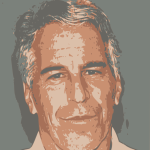As recorded in the supplement to the Summa, Thomas Aquinas teaches that the damned will rise again with bodies and will be tormented in hell corporeally. This leaves open questions about the materiality of the various biblical descriptions of those torments, and in question 97 of the supplement, Thomas addresses those. Jesus refers to a “worm that dies not” when talking about the damned, and Thomas wonders whether these are corporeal worms. His answer is that the worm is metaphorical.... Read more
















